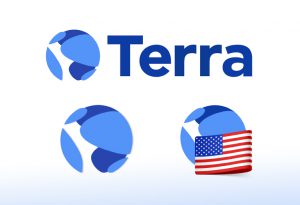
Table of Contents
ToggleA shocking title that shocks those who know the answer and attracts the attention of those who do not. Before I begin, I will end all expectations: it is not possible to mine LUNA.
Whether a cryptocurrency is “mineable” or not depends on certain characteristics of the network in which it is located. In this case, LUNA is on the Terra network and the blockchain consensus indicates that mining LUNA is not possible.
In this article I will explain the previous paragraph and, I will take advantage of the situation, to explain the functioning of LUNA, a unique and unrepeatable cryptocurrency. I will also tell you how you can earn LUNA, if you wish to accumulate this crypto.
Why can’t I mine LUNA?
It is not possible to mine LUNA because the creation of each LUNA unit is carried out in a different way than what we know as “cryptocurrency mining”. Although the method of creating LUNA is related to the one by which we see the birth of each new BTC or ETH, they are different.
Before continuing, we should understand what we mean by “mining”.
What does it mean to mine a cryptocurrency?
In blockchains that are governed by the “Proof of Work” consensus to validate transactions and create their new blocks, new cryptocurrencies are created by a method called “mining“.
Let’s understand this sentence in the light of the classic example, bitcoin. Transactions within the Bitcoin network are validated by miners. Their task can be simplified as follows:
-
- They take the transactions made by users, validate them and sort them into a block.
- When they have a block, by means of their famous video boards or ASICs, they try to solve a highly complex mathematical problem by throwing a series of random numbers.
- The miner who solves the problem, signs the block and adds it to the Bitcoin blockchain.
But what about mining? This occurs in the first transaction of the whole block. In it, the miner creates a transaction to himself an amount of BTC, currently 6.25 (it depends on the halving), and in this way new bitcoins are created.
Mining is therefore the process by which, on chains governed by the “Proof of Work” consensus, miners create or issue new cryptocurrencies through the computational power of their video boards and the resolution of mathematical problems.
In Terra’s blockchain, this method has no place. Let’s see what happens there.
How are new LUNA issued?
LUNA was “born” and “lives” within the Terra blockchain. Here, the consensus to validate transactions and create new blocks is substantially different from the one that takes place in the Bitcoin network. Terra is a “Proof of Stake” blockchain and there are no miners in it, as that role is fulfilled by validators.
The task of the validators is the same as that of the miners, but the method by which they are governed is different. We are faced with a more orderly process, let’s take a look at it:
-
- To become a validator it is necessary to make a deposit, in the form of a guarantee, which is usually very large.
- The network algorithm randomly selects a validator (of course, a higher security deposit increases the chances of being selected).
- The lucky validator selected verifies the validity of the transactions, signs the block and adds it to the network.
Although it is a similar process, here there is no fierce race to solve a mathematical problem and create a block, since it is a random algorithm that decides the next block creator.
However, when it comes to “creating” new coins, the mechanism is similar. The validators create a transaction for themselves and the new coins are “minted” or issued.
What happens in the Terra network, however, has its peculiarities.

The peculiarities of LUNA and Terra
In order to understand the particularities of this network and its native currency, LUNA, it is necessary to develop two vital points in the context of Proof of Stake networks:
-
- Roles fulfilled by your native currency
- Staking or delegation
- Roles fulfilled by your native currency
In the first aspect, LUNA fulfills the traditional roles but adds one that is exclusive or unique. In the second aspect, the particularity is given by the method of generating rewards to delegators and validators, plus the currency in which they are delivered.
Let’s unveil the mysteries of LUNA.
Roles of PoS (Proof of Stake) native network currencies
These types of cryptocurrencies usually have the following roles or functions within the networks in which they are found:
-
- Making the blockchain secure
- Payment of fees
- Governance
- Incentive to contribute to network security
The last point will be treated under the subtitle “Staking or delegation”, because its particularity requires it, but let’s see these roles and how LUNA fulfills them.
LUNA and security in Terra
We already had a small sample of how LUNA participates in the security of Terra’s network. The people in charge of ensuring that the blockchain is stable and secure are the validators.
How does LUNA contribute in this sense? In two ways, firstly by being the currency that validators must deposit as a guarantee to be able to develop this role and be chosen to validate transactions and be able to create a new block.
Secondly, LUNA is part of the rewards that both network validators and those who delegate their LUNA with them receive. We could say, LUNA is an incentive for users to participate in this process that ensures the proper functioning of Terra’s blockchain.
Payment of fees
Those who have interacted with any blockchain will know that, in most of them, it is necessary to pay a fee for each transaction. On the other hand, you will have noticed that this fee is usually paid in the native currency of the network. In Bitcoin we pay it with BTC and in Ethereum we pay it with ETH.
In the Terra network, although we can do it with LUNA, we can also do it with any of the stable currencies of the network. This is not only a peculiarity, but also a great advantage, since “LUNAtics” hate to part with their LUNA.
Governance
Any decentralized system requires decentralized governance. This idea does not stand up to analysis and we could say that it “falls under its own weight”. Another evident aspect is that LUNA is Terra’s governance currency.
LUNA holders, known in the inner circle as “the LUNAticos”, are those who can participate in the decisions made in the network, through their vote. This process is done in a simple way, within the network’s main wallet, which leads to a strong community involved with the project in the long term.
Staking or delegation
When I developed the brief explanation of the “Proof of Stake” consensus, I avoided talking about the incentive to participate as a validator of them and I also omitted a very important participant, the delegators.
Let’s imagine that I am a LUNAtico who wants to contribute to the security of the network, but it is impossible for me to set up a validator because:
-
- Requires an initial investment that I do not have available
- The required hardware is too expensive
- I also do not have the time that this task requires
Is there an alternative? Clearly, the answer is yes.
What is staking or delegation?
At this point, it may seem obvious, but I must explain. As “everyday” users of Terra’s blockchain, we can delegate or “stake” our LUNA with network validators and thus contribute to sustaining a stable and secure blockchain.
But do we do it for Terra’s sake? Perhaps some do, but the reality is that both those who delegate to validators and the validators themselves are rewarded for the work they do.
This happens in all blockchains that are governed by the PoS or Proof of Stake consensus. Now, where these rewards arise from is a differential in Terra’s network.
Where do Terra rewards come from?
In most blockchains of this type, an inflationary model is followed to cover these rewards. It is simple, with each new block a certain amount of this currency is issued and distributed, according to their percentage of contribution, to validators and delegators.
In contrast, in this blockchain, the model is not inflationary. Rewards to validators and delegators come from:
-
- Network fees
- The burning of LUNA
- Network fees
LUNA burning? That’s right, I’ll tell you about it in the next section. However, I can advance that the rewards in this network come not only in the form of LUNA, but also in each of the stable currencies of the Terra blockchain.

LUNA’s unique role
Unlike all cryptocurrencies we know, LUNA was born with one main function:
-
- It is in charge of creating UST (stable currency that tends to be worth one dollar) and all stable currencies in Terra
Here is the famous burning of LUNA. To create one unit of UST, it is necessary to “burn” the same nominal amount of LUNA. How is this understood?
-
- If LUNA is worth 100, 0.01 units of LUNA are burned to create 1 UST.
- Same value of LUNA, burning one unit of it would create 100 UST.
When this burning is performed, a small portion of these MOONs is collected by the network and used as part of the rewards mentioned above. The same process occurs with any of the network’s stable currencies.
What effects does this function have on LUNA?
The effects are clear and perceptible. More than 13.2 billion UST are currently circulating. This indicates that the same amount, in nominals, of LUNA has been burned.
The total supply of LUNA has decreased, since its conception, by some 300 million units. Its price has climbed from a low of $0.10 to the current $93. The scarcity of LUNA, derived from its burning to create stable coins, coupled with buying pressure, fueled this astronomical rise.
On the other hand, it is not minor to highlight the possible opposite effect. When users wish to dispose of their USTs, they can redeem them for LUNA. At times when the demand for LUNA is exceeded by the supply of USTs, the network validators issue LUNA to absorb this demand. The result is a drop in the price of this asset.
In any case, the current numbers indicate a balanced and healthy functioning of Terra’s blockchain and its native currency.
Philosophy and future
LUNA is a cryptocurrency different from its birth and the purpose for which this blockchain was created. Do Kwon, its founder, aims to spread UST and the use of stablecoins beyond the blockchain world.
Consequently, Terra’s main objective is to create real use cases for its stablecoins and, in this way, achieve greater adoption of cryptocurrencies.
LUNA was conceived to create stable coins and, in the process, captures the value of these coins, boosting its own price. As the uses of UST continue to grow, so will the scarcity of LUNA. You can imagine its future…

